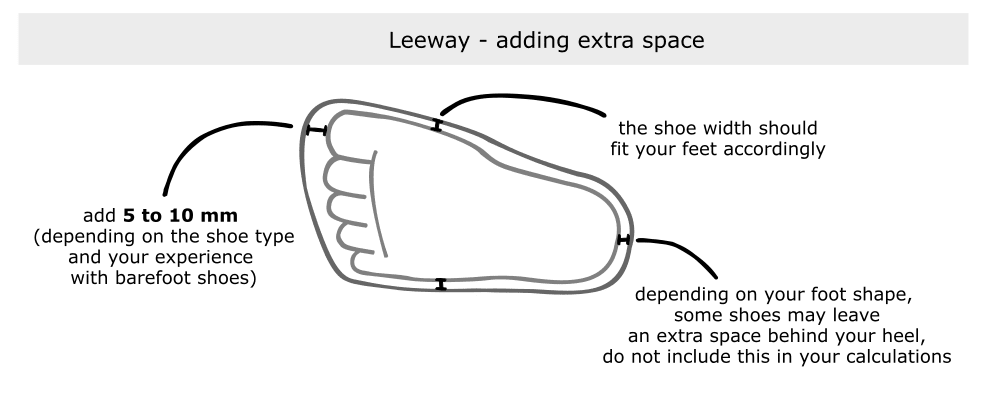Have you found the barefoot shoes of your dreams on our online store, but choosing the right size seems impossible? We have put together a practical guide on how to measure your foot and select the most suitable shoe size just for you. Because individual brands might have slightly different sizing, you will find a size chart below every item on our online store. Compare your measurements with this chart and you’ll get the right size on the first try.

All you need is a blank sheet of paper. Lay it down on a flat surface – ideally on a hardwood or linoleum floor (not on a thick carpet). Then, step barefoot on the paper and transfer your whole weight onto the leg. Now, you can start measuring, as follows:

Our tip: Measure your foot quickly and accurately using the special 12PLUS measuring device, which adds 12 mm extra space.
The foot length is not the same as the inner shoe length (commonly referred to as the “insole”). When choosing barefoot shoes, you have to add an extra space to the foot length. It is very important in order to make the foot walk properly without hurting the toes in the shoe’s toe box. Its length varies depending on the type of shoe and on the level of individual comfort. Generally, the leeway should range from 5 to 10 mm.

The size charts of individual brands may differ as much as the size of your left and right foot. Therefore, you’ll find a size chart below every item instead of a universal size chart for every single shoe.
How to understand the chart?
The lengths in the size chart correspond with the inner length of the shoe in millimeters. Once you measure the foot length and add the required extra space (5mm – 10mm), you get the desired shoe size. If your longer foot is 235 mm long and you want about a 6 mm leeway, a shoe with an inner length of 241 mm is just right for you. If you want more room in the shoe, then go with an inner length of 245 mm.
As you see, measuring your feet is not rocket science. Now that you know how to choose the correct size, there’s nothing stopping you from stepping out into the world of women’s, men’s and children’s barefoot shoes. Get ready for a comfortable walk and healthy feet.